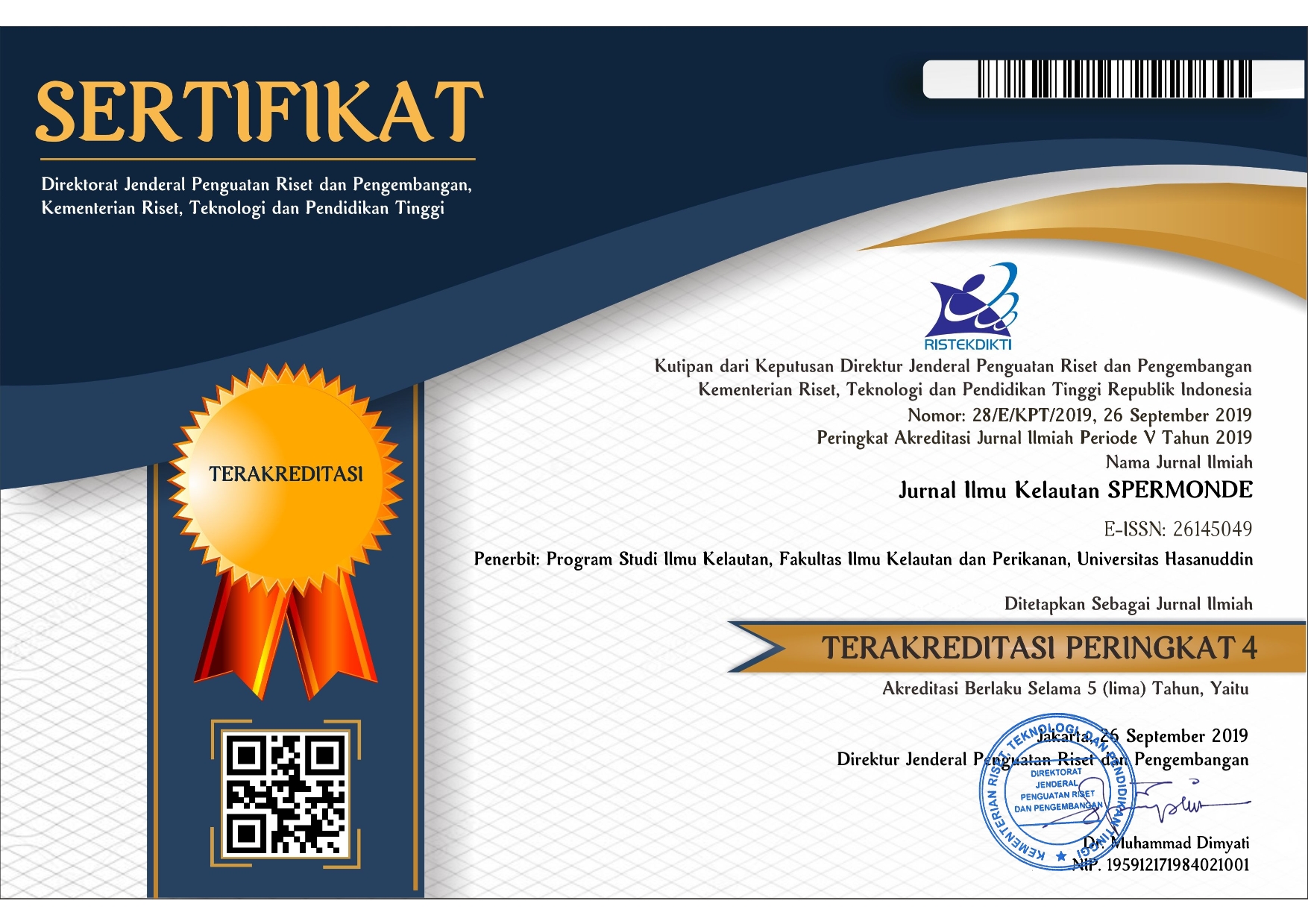SPATIAL DISTRIBUTION AND STRUCTURE OF PHYTOPLANKTON COMMUNITIES THAT HAVE THE POTENTIAL TO CAUSE HARMFUL ALGAE BLOOMS (HABS) IN THE WATERS OF LAIKANG BAY, SOUTH SULAWESI
DOI:
https://doi.org/10.20956/jiks.v10i2.19515Keywords:
Phytoplankton, HABs, Laikang BayAbstract
The presence of nutrients such as nitrate and phosphate can have a positive impact on phytoplankton growth. However, if the nutrient concentration is very high in the waters, it can cause an explosion in the phytoplankton population or Harmful Algae Blooms (HABs) in the waters. Phytoplankton explosions in waters have a negative impact on the surrounding ecosystem, marine biota, and humans. This research aimed to analyze the spatial distribution and structure of phytoplankton communities that can potentially cause HABs in the waters of Laikang Bay, South Sulawesi. This research was conducted in June 2021. The research found 20 species of phytoplankton HABs from 2 classes, namely Bacillariophyceae (8 types) and Dinophyceae (12 species). The Bacillariophyceae class has a higher percentage, 93%, and Dinophyceae at 7%. The abundance status of phytoplankton HABs is classified as not blooming, with the highest abundance found at Station 4 (control), namely 210 ± 80 cells/L. The HABs phytoplankton diversity index (H') is moderate with a value of 1.576 – 2.332, the uniformity index (E) of Station 1 (west) and Station 4 (control) is moderate with a value of 0.568 and 0.582 while Station 2 (north) and Station 3 (south) is classified as high, namely 0.807 and 0.823, the dominance index (D) is classified as low with a value of 0.135 – 0.357. Spatially, phytoplankton HABs based on the station can be divided into five groups. The results of the PCA analysis show that substations 1.A, 1.B, 1.C, 2.A, 2.B, and 2. C are characterized by high temperature and salinity parameters. Substations 3.A, 3.B, and 3.C are characterized by high nitrate and phosphate parameters. Meanwhile, substations 4.A, 4.B, and 4.C are characterized by high parameters of brightness, current speed, and pH and are associated with a high abundance of phytoplankton HABs.Downloads
Download data is not yet available.
Downloads
Published
2024-08-05
Issue
Section
Articles
License

This work is licensed under a Creative Commons Attribution-NonCommercial 4.0 International License.

This work is licensed under a Creative Commons Attribution 4.0 International License










